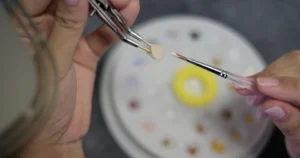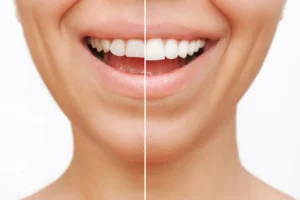Table of Contents
Dental implants are made of titanium or other biocompatible materials. After being surgically inserted into the mandible, implants provide a strong base on which dentures, crowns, and bridges can be placed to replace missing teeth. Dental implants are superior to other tooth replacement solutions primarily because they merge with the jawbone, offering a stable, long-lasting alternative that acts, feels, and looks like natural teeth.
Dental implants are becoming increasingly common because of their natural look and high success rate. But it’s crucial to remember that not every dental implant is made equally. Various implant kinds are available to meet the demands of various individuals and circumstances. If you are entirely aware of the possibilities, you will be better positioned to pick the finest dental implants for your specific scenario.
Main Types of Dental Implants
There are several types of dental implants, each designed to address different needs and preferences. Let’s explore the most common types:
Endosteal Implants
The most common kind of dental implants are endosteal implants, which resemble tiny screws. These implants serve as the prosthetic roots for the replacement teeth and are inserted surgically right into the jawbone. Endosteal implants are made of titanium, which is known for its strength and biocompatibility, allowing them to fuse effectively with the bone in a process called osseointegration.
Who are they for?
Endosteal implants are ideal for patients with sufficient jawbone density and volume to support them. They are often recommended for individuals who have lost one or more teeth and are looking for a long-lasting and reliable solution. However, if a patient’s jawbone is not thick enough or too soft, bone grafting might be necessary to build up the bone before placing the implants.
Benefits of Endosteal Implants:
- High success rate due to strong integration with the jawbone.
- Suitable for replacing a single tooth or multiple teeth.
- Provide a stable foundation for artificial teeth, ensuring natural function and appearance.
- Long-lasting and durable, often lasting a lifetime with proper dental implant care.
Subperiosteal Implants
Subperiosteal implants are placed under the gum but above the jawbone. These implants have a metal framework that rests on the jawbone, with posts protruding through the gum to hold the replacement teeth. Unlike endosteal implants, subperiosteal implants do not require drilling into the jawbone, making them a less invasive option.
Who are they for?
Subperiosteal implants might benefit patients who do not qualify for bone grafting or who do not have enough healthy jawbones to support endosteal implants. They are also a good choice for individuals who want to avoid the longer healing times associated with endosteal implants.
Benefits of Subperiosteal Implants:
- Less invasive than endosteal implants, with a shorter recovery time.
- A viable option for patients with insufficient jawbone density who cannot undergo bone grafting.
- Provides stability for dentures and bridges without the need for bone drilling.
Zygomatic Implants
Zygomatic implants are a specialized type of dental implant used when there is insufficient bone in the upper jaw. Instead of anchoring into the jawbone, zygomatic implants are anchored into the cheekbone (zygoma), which is denser and can provide a more stable foundation for the implants.
Who are they for?
Patients who are not good candidates for bone grafting and who have had severe bone loss in the upper jaw are usually advised to get zygomatic implants. They are often used in cases of severe bone atrophy or in patients who want to avoid the additional surgical procedures associated with bone grafting.
Benefits of Zygomatic Implants:
- It can be placed even in cases of extreme bone loss, providing an alternative to bone grafting.
- Immediate loading is possible, meaning the replacement teeth can be attached sooner.
- High success rates and durability, similar to other types of dental implants.
All-on-4 Implants
Patients often choose the all-on-4 implant procedure when replacing a whole dental arch. With this technique, an entire set of upper or lower dentures is supported by four carefully positioned implants. The implants are positioned at an angle to make the most contact with the accessible bone, providing a strong and sturdy foundation for the replacement teeth.
Who are they for?
All-on-4 implants are ideal for patients who have lost most or all of their teeth in one jaw and want a more permanent solution than removable dentures. This technique is also suitable for individuals with some degree of bone loss, as it minimizes the need for bone grafting.
Benefits of All-on-4 Implants:
- Faster procedure with fewer implants required, reducing surgery and recovery time.
- Fixed, non-removable dentures that provide a natural look and feel.
- Immediate function and improved stability compared to traditional dentures.
- Cost-effective compared to placing individual implants for each missing tooth.
Mini Dental Implants
Compared to conventional implants, mini dental implants have a smaller diameter. They are often used in cases where space is limited, or the patient has insufficient bone density to support larger implants. Mini implants are less invasive and typically require less healing time.
Who are they for?
Mini dental implants are suitable for patients with small or narrow teeth, those with reduced bone mass, or individuals seeking a less invasive option. They also stabilize dentures, making them a popular choice for older adults.
Benefits of Mini Dental Implants:
- It is less invasive with a shorter and simpler dental implant procedure.
- Reduced healing time and quicker results.
- It can be used to stabilize loose dentures.
- Suitable for patients with limited bone density or small teeth.
The Dental Implant Procedure
It is essential for anyone considering dental implants to have a thorough understanding of the procedure. It is important to note that while the process may vary depending on the type of implant and the individual needs of the patient, the following steps are generally involved in the dental implant procedure:
Assessment and Initial Consultation: During the first appointment, your dentist at Luth And Heideman Center For Dental Care will examine your jawbone thoroughly, using X-rays and 3D images, to determine the most suitable type of implant for you.
Personalized Treatment Plan: Based on the assessment, a personalized treatment plan is prepared, indicating the type and number of implants required, as well as any additional procedures like bone grafting, as needed.
Placement of the implants: The next step is surgically implanting the implants into the jawbone.
Osseointegration: After the implants have been placed, an extended healing period follows, which allows the implants to fuse with the jawbone in the process of osseointegration. Temporary restorations may be used during this process, which may take several months.
Placement of the abutment: Once the implant has been osseointegrated, the abutment is attached to it. You can attach the replacement tooth or teeth to the jawbone using this small connector.
Final Step: The crown or dentures are attached to the abutment, completing the restoration and providing a natural-looking and functional replacement.
Which Dental Implant is Right for You?
The right type of dental implant depends on several things, like the condition of your jawbone and how many teeth you’re replacing. Choosing the right implant type requires a consultation with a dentist.
At Luth And Heideman Center For Dental Care, we can replace one tooth or restore your whole mouth with dental implants. Our dental implant procedure gives you a comfortable experience and excellent results. Get in touch with us today to schedule a consultation and start restoring your smile.






